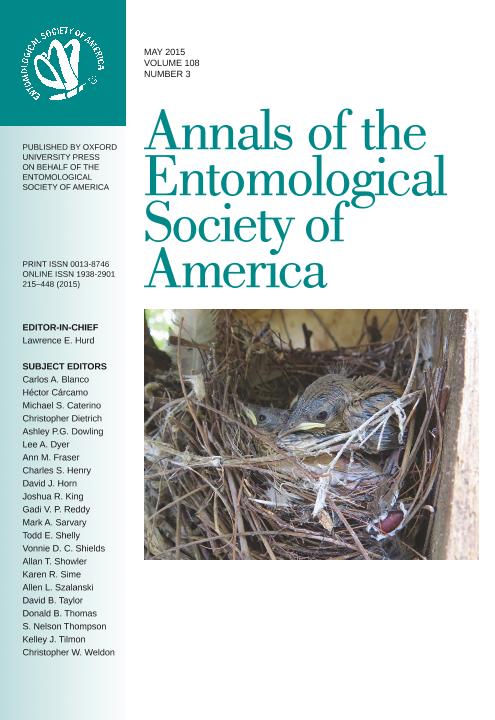Artículo
Philornis downsi (Diptera: Muscidae), an avian nest parasite invasive to the Galápagos Islands, in Mainland Ecuador
Bulgarella, Mariana; Quiroga, Martin Anibal ; Brito Vera, Gabriel A.; Dregni, Jonathan S.; Cunninghame, Francesca; Mosquera Muñoz, Denis A.; Monje, Lucas Daniel
; Brito Vera, Gabriel A.; Dregni, Jonathan S.; Cunninghame, Francesca; Mosquera Muñoz, Denis A.; Monje, Lucas Daniel ; Causton, Charlotte E.; Heimpel, George E.
; Causton, Charlotte E.; Heimpel, George E.
 ; Brito Vera, Gabriel A.; Dregni, Jonathan S.; Cunninghame, Francesca; Mosquera Muñoz, Denis A.; Monje, Lucas Daniel
; Brito Vera, Gabriel A.; Dregni, Jonathan S.; Cunninghame, Francesca; Mosquera Muñoz, Denis A.; Monje, Lucas Daniel ; Causton, Charlotte E.; Heimpel, George E.
; Causton, Charlotte E.; Heimpel, George E.
Fecha de publicación:
05/2015
Editorial:
Entomological Society of America
Revista:
Annals of the Entomologycal Society of America
ISSN:
0013-8746
e-ISSN:
1938-2901
Idioma:
Inglés
Tipo de recurso:
Artículo publicado
Clasificación temática:
Resumen
Philornis downsi (Dodge and Aitken) is a bird-parasitic muscid fly native to mainland South America that recently invaded the Galápagos Islands where it is parasitizing Darwin's finches and other land birds. This parasite was previously known only from Argentina, Brazil, and Trinidad and Tobago. The first report of P. downsi from mainland Ecuador is provided, supporting the hypothesis that the invasion route of P. downsi from its native range to the Galápagos Islands includes mainland Ecuador. Four different morphologies of pupal exuviae, which belong to different fly species, were uncovered. Dipteran puparia were found in 20% of naturally occurring nests collected in 2013 and in 27% of nests in 2014 at the two sites in western Ecuador. P. downsi accounted for 74% and 40% of the puparia in 2013 and 2014, respectively. Two new bird host species for the genus Philornis were recorded: the streak-headed woodcreeper (Lepidocolaptes souleyetii) and the fasciated wren (Campylorhynchus fasciatus). The levels of nest parasitism found were much lower than levels reported for the Galápagos Islands. Finally, parasitism of P. downsi by a parasitoid in the genus Brachymeria (Hymenoptera, Chalcididae) is documented. Overall, 9% of fly puparia collected in 2013, and 19% of those collected in 2014, had parasitoid emergence holes.
Palabras clave:
Bird Nest Boxes
,
Brachymeria
,
Ecuador
,
Galapagos Islands
,
Muscidae
,
Parasitoid
Archivos asociados
Licencia
Identificadores
Colecciones
Articulos(ICIVET-LITORAL)
Articulos de INST. DE CIENCIAS VETERINARIAS DEL LITORAL
Articulos de INST. DE CIENCIAS VETERINARIAS DEL LITORAL
Citación
Bulgarella, Mariana; Quiroga, Martin Anibal; Brito Vera, Gabriel A.; Dregni, Jonathan S.; Cunninghame, Francesca; et al.; Philornis downsi (Diptera: Muscidae), an avian nest parasite invasive to the Galápagos Islands, in Mainland Ecuador; Entomological Society of America; Annals of the Entomologycal Society of America; 108; 3; 5-2015; 242-250
Compartir
Altmétricas



